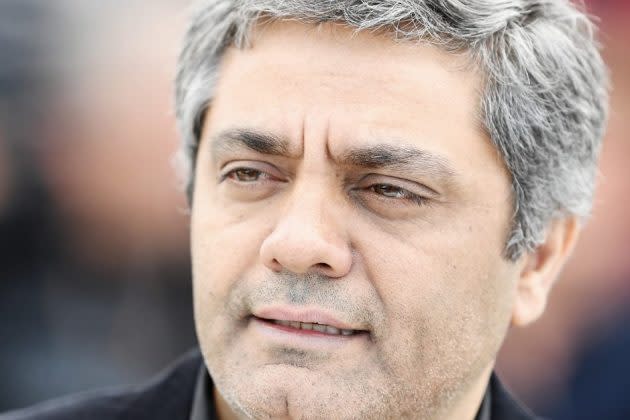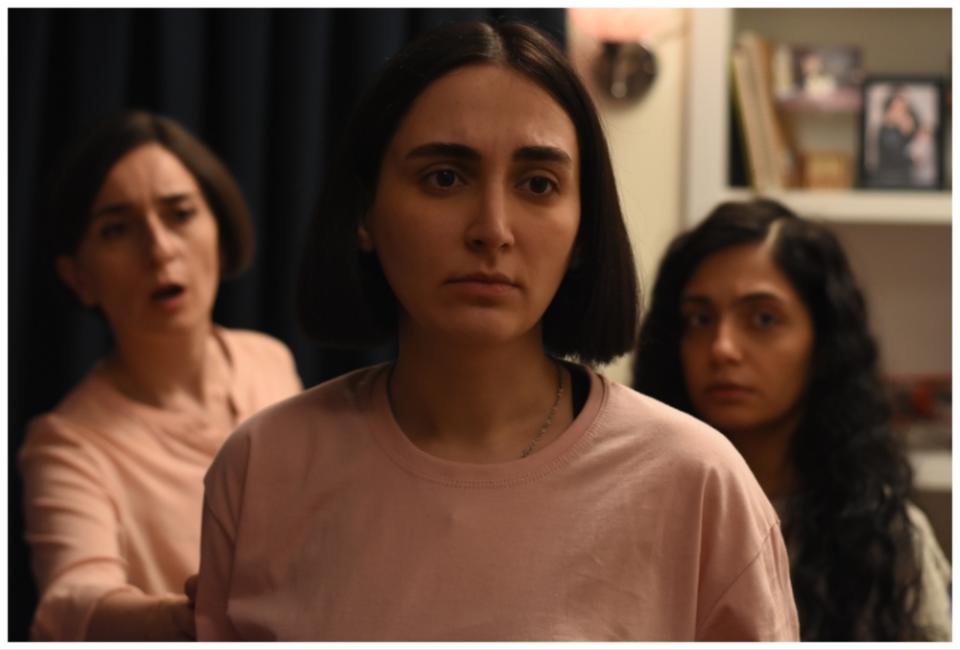Mohammad Rasoulof on Escaping Iran and Why the Regime Won’t ‘Last Long’: We Can’t ‘Allow Them to Go on Holding Their People Hostage’

Dissident Iranian director Mohammad Rasoulof a few days ago absconded from his country with a heavy heart after being sentenced to eight years in prison and flogging by Iran’s Islamic Revolutionary Court for making his latest film, “The Seed of the Sacred Fig.”
Ironically, the groundbreaking drama is centered on an investigating judge operating within the same judicial system that has been heavily harassing the film’s producers and actors, and that intended to put Rasoulof behind bars.
More from Variety
Having made the tough decision of escaping his beloved homeland, Rasoulof – who is among Iran’s most prominent directors – prepares to attend the film’s world premiere at Cannes on Friday.
Prior to the timely drama’s bow, Rasoulof spoke to Variety about his drive to keep making movies about Iran that speak truth to power — regardless of the consequences — and expressed his firm conviction that the fiercely repressive Iranian regime is on its last legs.
“The Seed of the Sacred Fig” says a lot about the current state of affairs in Iran. What prompted you to tell this specific story centered on an investigating judge in the Revolutionary Court in Tehran and his wife and daughters all contending with the bold protests that followed the death of Masha Amini?
For years, I’ve been asking myself, “Who are the people who make this [judicial] system work?” It’s not just a structural system. There are also people that make it work. Who are they and what is their state of mind? What are their motivations? What do they live for, really? And because I got the opportunity to go to prison myself and undergo interrogations, and go to court, I was able to observe them [the judiciary] and to try and find answers to this question. And this film is really about that, the answers that I found and the kind of characters that I observed through this process.
Could you elaborate on the specific aspect of the protests in Iran that followed the death of Mahsa Amini and your decision to use footage from cell phone videos of the actual protests in the film?
I had at least three reasons to use this material, these archives, and to integrate it into in my narrative. The first one is that I wanted to show the importance of the medium of cell phones and how cell phones now allow the younger generation to have a huge perspective on the world. Not only on what’s going on in their own country, but in the world. Their minds and their eyes are open to the world through this medium of cell phones and the internet. The second aspect was to show the impact of this awareness on the younger generation and what this knowledge of the world prompts in their generation. And the third one is that I had no other means than this footage to show what’s going on outside the home of the family that I was filming in interiors. I had no means to go and film what was going on outside their home or where the change was coming from. It was coming from outside, and so my only way to move out of this space and to show what was happening outside was to use existing images.
Perhaps I must point out that these three aspects I mention are within the context of a very strong repression in a dictatorship in which control of information is one of the first tools of repression.
Speaking of interiors, the female actors in this film are not wearing a hijab, which of course is not permitted in Iran and is not seen in official Iranian cinema. You have been sentenced to jail for making this film, and I know that actors and crew have been harassed. Are the female actors now in Iran, and what is their situation? Are they in danger?
So Soheila Gholestani, who plays the mother, is in Iran and she is being harassed. She has been arrested by the security services. The three young actresses have left Iran. They’re not in Iran anymore. Their families have been put under pressure, but now at least they are safe. It’s obvious that the way they and the country appear in this film is not an image that the Islamic Republic is willing to have seen, given what’s going on. And so they would do anything to stop this from happening.
It’s logical to assume that “The Seed of the Sacred Fig” was shot clandestinely. Of course, this is not the first time that you have done this. But this is probably an even more problematic film than the preceding ones. Talk to me about how you managed to shoot it.
Well, yes, as I said, It was mostly shot in interior, especially in the home of the family. And for the rest, there are some exterior shots that were done outside Tehran, not in the city. For the city, I also had to use some documentary footage to avoid shooting those scenes myself. When you write the film, from the outset you write according to your restrictions. But at the same time, there are always ways to even shoot some scenes in the streets [without permits]. But I can’t really be too explicit about this because I would put some people in danger. What’s interesting is that these types of clandestine movies are being made in Iran. I’ve heard that many of them are being made, and I’ve see a couple of them. That’s the most important thing. That people are continuing to create, to make movies in spite of all the repression and the restrictions. People are still creating, and they can’t be stopped.
You’ve said that you had to choose between being imprisoned and leaving Iran, and “with a heavy heart” you chose exile. What are you going to do now?
The only reason I left Iran — and that was what made me take that decision — was to go on telling the stories of my land. That was really my only motivation. I need to go on telling stories, creating stories. If this could simply mean doing so through animation or other any visual language I would’ve stayed and kept on doing it there. But the latest events have now led me out of the physical reality of Iran. However, this does not mean that I have left the narratives of Iran. Iran is still inside me, and I still can go on telling Iranian stories and conveying them to the rest of the world. This is really what matters most to me, to create this connection between the world and Iranian narratives.
You’ve asked the international film community for support. What can they do to support Iranian filmmakers like you who are making their voices heard?
All they can do — and should do — is protest against the behaviour of the Iranian regime with the artists, with people who have no other guilt than the fact that they express themselves through works of art. Right now, not just the crew of this film, but many other artists are being harassed and put in jail. Popular rapper Toomaj Salehi has been sentenced to death just for singing some songs. This is something that cannot be accepted, and no one can remain silent in front of such behaviour.
You have now joined the ranks of exiled Iranians who, as you put it in your statement, are impatiently waiting to bury the Iranian machine of oppression in the depths of history. Do you think Iran is now on the brink of this actually happening?
Definitely. I think that the Iranian regime is not in a condition or in a situation that will allow them to last long, and that the international community should stop being so mild with them and not allow them to go on holding their people hostage.

This interview has been edited and condensed for clarity.
Best of Variety
Sign up for Variety’s Newsletter. For the latest news, follow us on Facebook, Twitter, and Instagram.

 Yahoo Movies
Yahoo Movies 
